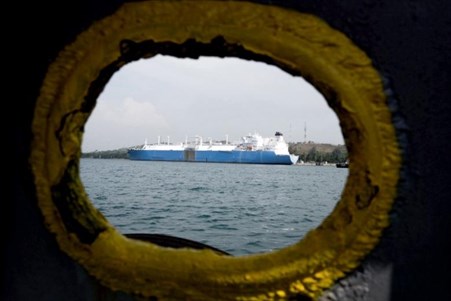Column: Coal's cost advantage over LNG slipping, but not yet enough

Photo courtesy of Reuters.
(The opinions expressed here are those of the author, a columnist for Reuters)
(Reuters) Thermal coal has been one of the commodity success stories this year, but there is a risk that it becomes a victim of its own success by eating into its advantage over LNG in generating electricity.
The benchmark Australian thermal coal price, the Newcastle Index, rose to $70.76/ton in the week to Sepember. 16, its highest in 18 months and taking its gain since the start of the year to almost 40%.
In contrast, the price of spot LNG in Asia was $5.60/MMBtu on September 16, down almost 19% from the end of last year.
The two fuels are at different stages in their price cycle, with thermal coal likely to snap five years of losses in 2016, while LNG is on track to notch up a third consecutive down year.
The difference is mainly because the market for coal used in power stations has finally started to balance, with the prior years of oversupply coming to an end as mines shut down or cut back output and demand gains in Asian markets, with China proving a standout so far this year.
LNG is still some way from this point, with more supply expected to reach the market this year and for the next few years, coupled with question marks over whether demand growth will rise sufficiently to absorb the new production.
Nine liquefaction trains are expected to start up in 2016, adding 35 MMt of LNG to the market, ANZ Banking Group said in a research note published on September 13.
The additional capacity is largely from new plants in the US and Australia, which is poised to become the world's largest producer of the super-chilled fuel as it completes eight new projects that have been under construction.
Between 2016 and 2020, global LNG capacity is expected to rise by about 50% to around 370MMtpy.
This surge in supply will challenge even the most optimistic demand forecasts, meaning that the LNG price is likely to have to decline further to make the fuel more tempting to buyers.
Global flows data compiled by Thomson Reuters Supply Chain and Commodity Forecasts using vessel-tracking show that the LNG market is growing, but nowhere near fast enough.
In the January-to-August period this year, the ship data showed cargoes totaling 186.6 MMt being delivered.
This was 7.7% higher than the 173.2 MMt for the same period in 2015, and 10.7% above the 168.5 MMt in the first eight months of 2014.
Widening LNG supply-demand gap. While a 10% gain in demand doesn't sound too bad, the additional capacity in supply in 2016 is in the order of 15%, opening up a substantial supply-demand gap.
This gap is likely to widen over the coming years as new plants start up in Australia and the US, which will grow to become the third-largest exporter of LNG behind Australia and Qatar by 2020.
Overall, a picture emerges of plentiful LNG supply and a thermal coal market closer to balance.
The question is just how much further do LNG prices have to drop for the cleaner-burning fuel to displace coal in Asia, as it has been doing successfully in the US.
One ton of anthracite coal provides approximately 22.58 MMBtu of heating value when burned in a coal-fired plant, according to data from the US Environmental Protection Agency.
Using Japan's landed costs for thermal coal, which was an average $69.30/ton in July, it implies an equivalent of $3.07/MMBtu, which is roughly half of the landed cost of LNG of $6.39/MMBtu in the same month.
Since July, the rising cost of coal and the cheaper LNG price will have narrowed that gap slightly, but not to the extent where Japanese utilities will be rushing to switch generating fuels.
It pays, however, to look at a bit of context here. When LNG reached its record high of $20.50/MMBtu in February 2014, Newcastle coal was around $77/ton, or $3.41/MMBtu.
Generating power from coal is largely the same cost now as it was 30 months ago, while using LNG is a little more than a quarter of the price, a substantial drop.
There are other factors that may help LNG's case, such as its lower carbon emissions, cheaper capital costs of building gas-fired power plants and its suitability to integrate with higher use of less consistent renewables such as solar and wind.
Nonetheless, it seems likely LNG will have to drop further to become competitive with coal in Asia on a purely cost basis.
By Clyde Russell; Editing by Himani Sarkar

- ExxonMobil halts 1-Bft3d blue hydrogen project in Texas
- Aramco and Yokogawa commission multiple autonomous control AI agents at Fadhili gas plant
- Ukraine will resume gas imports via Transbalkan route in November
- Mitsubishi to inject $260 MM into Brunei LNG project
- Freeport LNG (U.S.) on track to take in more natgas on Thursday after unit outage



Comments